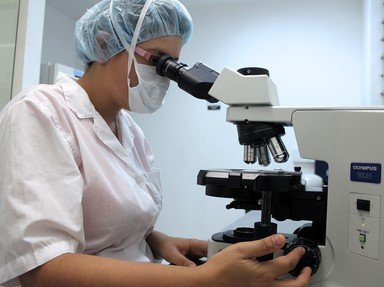Quiz Answer Key and Fun Facts
1. Mucins belong to a group called the MUC family and are glycoproteins. What does the term "glycoprotein" mean?
2. Some mucins are secreted and can form gels - what we call mucus! What special linkages, characterised by oxidised cysteine residues, are necessary for the formation of these gels?
3. One of the most important functions of mucus is the formation of a protective barrier. For this reason, mucus is found at surfaces that are exposed to the environment. What name is given to these surfaces?
4. Mucins are highly negatively charged. Why is this important to their function as gel-forming agents?
5. Disorders arising from problems with mucus can tell us a lot about its function. In one disorder, mucus in the respiratory tract is under-hydrated and so becomes thick and sticky. This mucus cannot be moved and so bacteria remains and infections develop. Which of these disorders is being described?
6. The role of mucus as a protective barrier was also seen when scientists inactivated the gene coding for MUC2, which is a major constituent of the mucus barrier in the intestines. What name is given to this approach of inactivating genes to deduce function?
7. Mucus is more than just a barrier. In the stomach, it can hold bicarbonate ions that are secreted by epithelial cells of the stomach. Why is this important?
8. The 2005 Nobel Prize in medicine was awarded for the discovery that stomach ulcers are caused by bacteria. Further investigation into stomach mucus revealed an incredible complexity in the defence against these bacteria. Which of these is *not* a protective function of mucins against stomach ulcer-causing bacteria?
9. Some cells have become specially adapted to release mucus en masse. They hold mucins in dehydrated granules and release them upon external stimuli. What are these cells called?
10. An interesting finding was that mucins, as well as forming mucus, can also be involved in cell signalling. Specifically, some mucins (such as MUC4) have been shown to act in a similar way to growth factors, resulting in cell proliferation. Based on this finding, which of the following disorders is most likely to arise as a result of over-expression of these mucins?
Source: Author
doublemm
This quiz was reviewed by FunTrivia editor
WesleyCrusher before going online.
Any errors found in FunTrivia content are routinely corrected through our feedback system.
